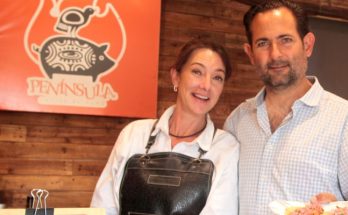By Carolina de la Cajiga
No more schooling after 12.
Cándido Pirul Licea had to start working full time when he turned 12. He became an apprentice in a blacksmith workshop. When he felt he had no more to learn there, he moved on from shop to shop until he became a workshop manager. His last employer was an engineer, where he learned one of his most important lessons: the science and the relevance of accurate measurements.
After having forged hundreds of doors, windows, grills, tables, and decorative pieces during his 25 years of blacksmithing for others, Cándido felt ready and opened his own shop, becoming an entrepreneur. Leaving the comfort of a secure salary for the uncertainty of generating enough income month after month can be overwhelming, particularly if you have a family to support. The leap causes butterflies in the stomach, da ñañaras*, yet it brings the satisfaction and pride of being independent and responsible for one’s destiny. But he wasn’t alone. His mother, and later his wife, encouraged and helped as they all struggled together.
It was difficult at first: His workshop had no roof, the sun shone in, the rain soaked everything, and the cold seeped through. To get chamba**, he went to construction sites to offer his services, and, when he couldn’t find any, he helped other blacksmiths. However, nowadays, customers come to him, confident in the quality of his workmanship. They usually arrive with the design in hand. Knowing the idiosyncrasies of iron, Cándido makes recommendations so the idea on paper becomes a reality.
The blacksmithing trade has remained almost the same for thousands of years, since prehistoric times. Cándido comments, “What I enjoy the most is working on the forge. Bending the metal to the shape I want. The moment of heating the metal red-hot to temper it, watching the crackling, and listening to the roaring, deafening, discordant sounds of my hammer is sublime.”
One of the most memorable installations he’s built is a third-floor, iron-and-glass dome that opens manually via a cable on the first floor. The assembly and installation were intricate as it was 8-meters high. All the material had to be raised and welded at that height. On the day of the installation, the wind blew forcefully.
His most unusual job so far was forging three very heavy, 10-meter long iron beams. Transporting them to the construction site was going to be complex and costly. The client, worried about how to do it, planned to hire 15 workers. Cándido found a less expensive and more practical solution. He built three rollers with bearings. With some effort, he and his two assistants rolled the heavy beams to the truck. Surprised, the client congratulated him on his ingenuity.
Surviving the pandemic, which almost paralyzed the world for two years, was hard. The demand for work dropped tremendously; fortunately, his business continues alive and thriving. The blacksmith trade for traditional colonial construction in San Miguel has rebounded. Cándido acknowledges the competition is strong; nonetheless, there’s work for everyone—especially for those who are efficient and accomplished. Cándido has never regretted his decision to become his own boss.
You can reach Cándido in his workshop on Avenida Independencia 56, Colonia San Rafael, and at 415 121 7841.
* In Mexico, the colloquial term dar ñañara is used to express the sensation of uncertainty and trepidation.
** Chamba: In the 1940s, in the United States, when Mexican agricultural workers finished their contracts, they went to the Chamber of Commerce in search of another job. They used to say, “I’m going to the Chamba,” which referred to getting work.
If you know someone you would like us to feature, please send us their contact to editorial@atencionsanmiguel.org




